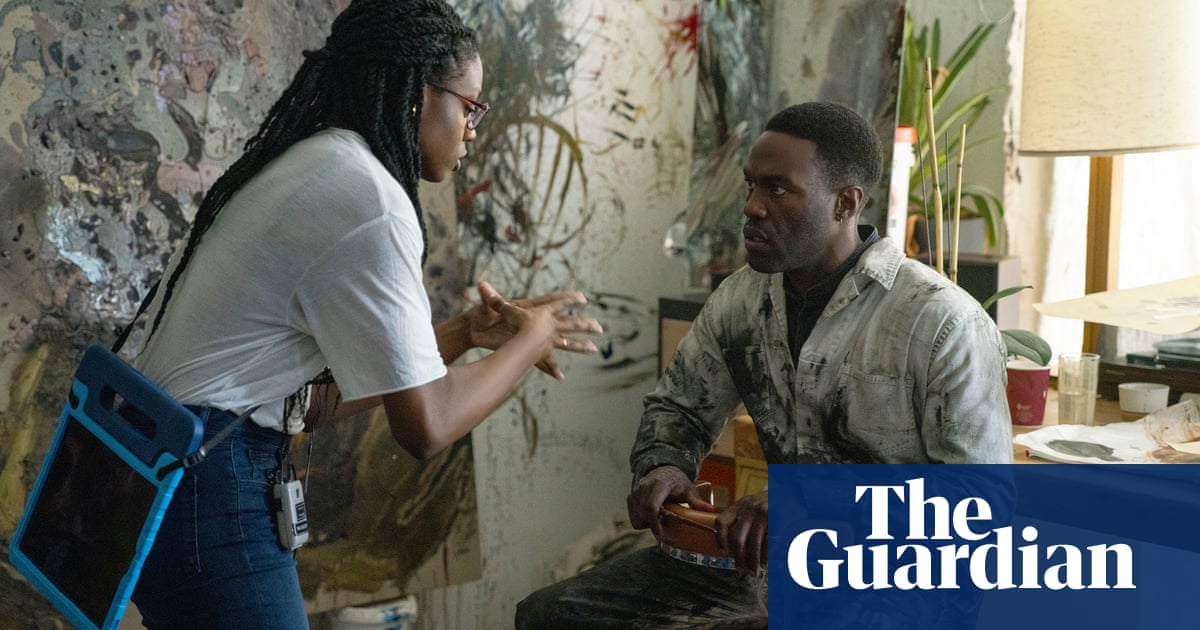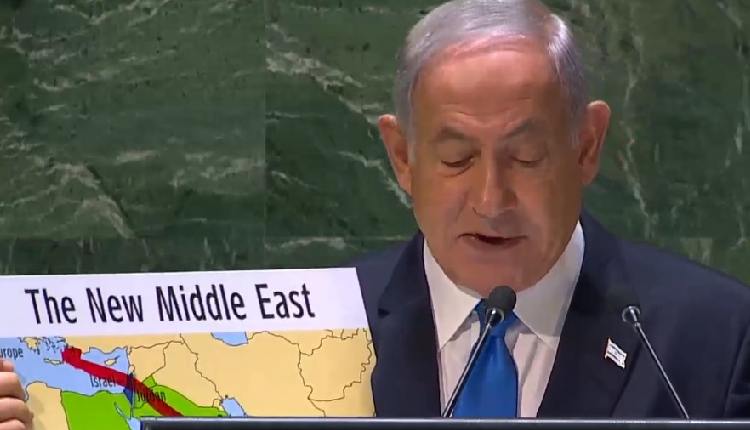
Show caption Nia DaCosta with Yahya Abdul-Mateen II on the set of Candyman. Photograph: Parrish Lewis/AP Horror films Candyman director Nia DaCosta: ‘It is shocking the way people have talked to me’ As well as rebooting the horror classic, the 31-year-old is directing a Marvel movie with a $100m-plus budget. She talks about ambition, superstition – and whether she’s risked saying ‘Candyman’ five times Steve Rose @steverose7 Thu 26 Aug 2021 14.33 BST Share on Facebook
Share on Twitter
Share via Email
“Say it,” implore the posters for the new Candyman sequel, referring to the urban myth that the hook-handed ghost of the title can be summoned by repeating his name five times in front of a mirror. But Nia DaCosta will not say it: “Oh hell, no.” She is shaking her head. “Never have done, never will.” Despite having directed and co-written the film, DaCosta isn’t taking any chances. “In fact, when I was watching auditions, I would get a little freaked out so I’d stop the audition before they said it all five times. So silly,” she admits, laughing at herself. But she is not superstitious, she insists. “It’s just that one bit. Nothing [else] about it scares me at this point. Except … I’m just not gonna put myself in the space for my brain to play tricks on me.”
Probably best not to jinx it. Right now, DaCosta’s career is definitely looking more charmed than cursed. Within the space of three years and three films, she has shot to the top of the industry. Candyman, which was produced by horror supremo Jordan Peele, follows her debut feature Little Woods, a social-realist “western” centred on two impoverished sisters in modern-day North Dakota. Now DaCosta is in London shooting The Marvels – the sequel to Marvel’s blockbuster Captain Marvel, with a budget of well over $100m. Not bad for a film-maker who is not yet 32 years old; unprecedented for a Black, female one. Bright, enthusiastic, fast-talking and quick to laugh, DaCosta still has the air of an unjaded newcomer.
We meet in a boutique hotel in Notting Hill, which is apt considering one of Candyman’s central themes is gentrification. Just as Notting Hill has transformed from a run-down neighbourhood of immigrants into one of London’s swankiest postcodes, so Bernard Rose, director of the original, 1992 Candyman movie, transposed Clive Barker’s story from Britain to Chicago’s Cabrini-Green housing projects, a deprived, heavily African American neighbourhood. DaCosta’s sequel revisits Cabrini-Green in the present day. As in real life, the projects have been demolished, replaced by luxury apartment towers. Black painter Anthony (Yahya Abdul-Mateen II) and his gallerist partner Brianna (Teyonah Parris) have moved to the area with little knowledge of its troubled past. Anthony’s career isn’t going great and when he discovers the urban myth of the Candyman, he thinks he has struck gold, but it turns out to be more of a Faustian pact.
As with the original Candyman, DaCosta’s update is no straightforward yarn of would-be victims versus a supernatural monster. Candyman is more complex than that. Memorably played by Tony Todd in the 1992 original, he is the ghost of a 19th-century artist who was horrifically maimed and killed for becoming too close to a white woman. Thus, he is America’s racist past coming back to haunt it. He is a perpetrator and a victim, monstrous yet sympathetic. “He’s a person, which is the whole point of this movie. He’s not just some like floating demon slayer, and it’s a really tricky balance,” says DaCosta. “He’s someone who clearly has a lot of pain, and that’s something I find really interesting about him as a character.”
The original movie had its flaws, it must be said. Chiefly that the Candyman’s victims were mostly Black people (including DaCosta’s future mentor Kasi Lemmons, now a respected director in her own right), and its hero, played by Virginia Madsen, is an almost stereotypical white saviour. But in a traditionally white-dominated genre, Rose’s film (which was followed by two inferior sequels) created one of the few Black horror icons in popular culture. “I think Candyman is important in that way,” says DaCosta. “Not necessarily my movie, but the concept of a sort of mythological figure that you can transpose a lot of stories on through horror, which is an easier genre through which to passively accept some hard truths.”
It was important to DaCosta and Peele that this revival be a story about Black people told by Black people. She still sounds a little surprised she got the job. After Little Woods, she came to Britain to direct a couple of episodes of the crime series Top Boy (she also did her master’s in writing here, at Royal Central School of Speech & Drama, so she’s no stranger). That was when she found out she was on the shortlist for Candyman, to her surprise. So she flew LA to pitch to Peele. “I love horror and I felt like I had a really good idea about how to make something scary, but also I’m very measured, especially with a story like this, about what is appropriate and what is not appropriate.”
She had to rein in her inner geek with Peele, having been a huge admirer of Get Out and his sketch show, Key and Peele. “I’d be in meetings with him and he’d start doing voices [from the show], and I’m like: ‘He’s doing that!’ I don’t think he knew how big of a fan I was, until I mentioned a particular sketch and he was, like, ‘Whoa, that’s a deep cut.’ And I was like, I’ve seen every episode, five times. Slightly embarrassing but, um, I think he’s so brilliant.”
Had DaCosta’s film come out last June, as intended, it would have arrived at the height of the Black Lives Matter protests sweeping the US. Uncanny timing, perhaps, but DaCosta, who participated in BLM marches herself, is relieved that didn’t happen: “I would have hated getting the question, ‘Isn’t it so timely right now, with all these deaths going on?’ That’s not why we made it. But I think it will happen again – a summer like last summer. I think that the story we’re telling was about that: the fact that it’s cyclical. It could come out next year, it could come out any time and still be relevant.”
I genuinely can just make a movie that doesn’t have to traffic in Black pain
The other key target of DaCosta’s Candyman is the art world, which is presented as an exclusive, money-fuelled realm, policed by white critics, agents and gallerists. To boost his appeal, Anthony is encouraged to incorporate more “hood” themes into his art. Could we draw parallels with the film industry here?
“A hundred percent,” DaCosta laughs. “I’ve had that conversation so many times with people where I mention something offhand about my childhood or something and they’re like: ‘Oh, they should do that [in the movie]’. And I’m like: ‘Why?’” Candyman could be seen as an ironic comment on the fact that Black artists are expected to deal with issues of Black trauma.
It is even worse for female film-makers, DaCosta suggests: “It’s not necessarily overtly racist, but it is shocking the way people have talked to me in my position as a director. People who work for me. Especially on a movie like this, where Jordan was the only other person of colour at the level of decision-making on the movie. And that’s unacceptable, frankly.” She talks of crass comments about Black hair. She recalls a time she was outside waiting for her assistant one night and a (white, male) crew member jokingly asked if she was hooking to make money on the side. “That happened to me so many times, with people who work above me, who work laterally to me, below me. In the moment, you’re just like: ‘Push on.’ You just deal with it. But in retrospect, I will never do that again.”
Yahya Abdul-Mateen II as Anthony in Candyman. Photograph: Parrish Lewis/AP
DaCosta grew up in Harlem, raised by her mother, who emigrated from Jamaica. Her mother was once a singer (her group, Worl-A-Girl, features on the soundtrack of Jamaican bobsled comedy Cool Runnings), so she supported her daughter’s creative path but warned her “this is going to be very hard and you’re going to be very poor”. DaCosta’s first movie loves were 70s directors such as Martin Scorsese, Francis Ford Coppola, Sydney Lumet and Alan Pakula. Seeing Apocalypse Now was a formative experience. “I revisit it before I start shooting anything,” she says. “People don’t really make original epics on that scale any more. It’s like scale and idiosyncrasy have been sort of separated from each other.” She checks herself: “I say as I make a Marvel movie.”
The Marvels at least pushes the superhero frontiers back a little further. Alongside Brie Larson’s Captain Marvel, it introduces mainstream cinema’s first Muslim superhero: Pakistani-American Kamala Khan, AKA Ms Marvel, played by Iman Vellani. The Ms Marvel character was already a favourite of DaCosta’s. “I was like: ‘Oh, this is me in high school.’ I really related to her nerdiness and her being awkward.”
By her own admission, DaCosta is a huge comic-book nerd. In fact, at her first meeting with her Marvel producer, Mary Livanos, DaCosta almost put her off with her enthusiasm. “I just nerded out,” she says. “I was like, here are the movies I think you should do! Galactus, Storm and Scott Summers team-up movie! Blah blah blah! She just endured me going in super-deep. And she also gave me a lot of confidence that I would have the creative latitude to not just basically be a puppet on a string.”
Unlike her Candyman character, DaCosta’s is not the story of an artist selling their soul; she always had the ambition to make genre movies with higher budgets, she says. And crucially, she hasn’t had to compromise in order to get where she is. “We should be able to make different kinds of movies, so I’m really happy I got to make The Marvels because it’s like, I genuinely can just make a movie that doesn’t have to traffic in Black pain. And I feel like a lot of black film-makers are asked to or expected to do that.”
Her rise is clearly down to more than just chance, but it is, she acknowledges, also an indication of how the industry has changed and is changing. “This would not be my career five years ago,” she says. “I’ve been very lucky and I’ve worked really hard, and I’m really happy that I’ve had the experiences that I’ve had. Well … the good ones at least. At the same time, as well as I’m doing, this should be happening for more people who are like me.”
Candyman is released in the UK on 27 August
• This article was amended on 27 August 2021. Nia DaCosta is the director and co-writer of Candyman, not the co-director and sole writer, as an earlier version said.







